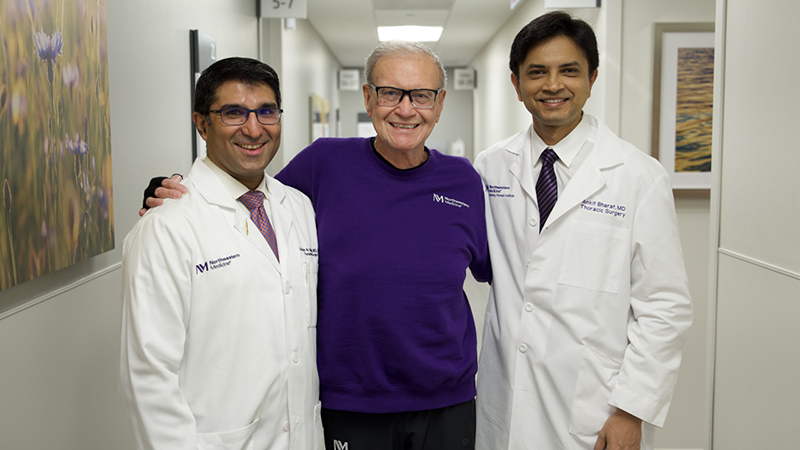Physical Therapy Helps a Patient With BPPV Reach Her Goals
Treatment for Benign Paroxysmal Positional Vertigo
Published September 2022
Benign paroxysmal positional vertigo (BPPV) is an inner-ear disorder that occurs when small calcium crystals in your ear, called otoconia, loosen from their normal location in your ear. It causes a spinning sensation whenever you move your head and can lead to a temporary loss of balance.
Arlene Thompson has been experiencing this condition since 2016. "I've had [BPPV] episodes more frequently within the last year, and they are debilitating," says Arlene. "It can keep me down for about two weeks until I can function normally."
I'm so thankful for the support.— Arlene Thompson
Just a few weeks before her son's wedding, Arlene experienced a series of episodes that she thought would keep her from participating in the special day. Then, she reconnected with Jake Steffes, a physical therapist at Northwestern Medicine Outpatient Rehabilitation.
"I've worked with Jake in the past. Although he had a busy schedule, he went the extra mile and was willing to see me about three times a week leading up to the wedding," says Arlene. "I told Jake I had three specific goals: walk down the aisle, witness their ceremony and have my mother-son dance with Zachary."
A physical therapist's primary roles are to restore function, and help patients manage their symptoms and reach their goals. "My goal for Arlene was to enjoy as much of that wedding as physically possible," says Steffes. "There was a little bit of a challenge with that, so I made sure to touch base with her every other day to create a plan that was most appropriate for her current condition."
For therapy, Arlene used different head and body positions to return the dislodged otoconia to their original resting position. Arlene attended therapy sessions for about three weeks before the wedding. Together, Steffes and Arlene set a goal to regain about 80% of her function before the wedding. However, they were in for a surprise: A few days before the wedding, Arlene arrived at her physical therapy session doing much better than anticipated.
"I remember her twirling around and showing me how well she was doing," Steffes says. "We didn't want to mess with anything because she had a dress rehearsal the next day and was doing so good that we decided she no longer needed to attend therapy."
In the end, Arlene achieved her goals, a feat she credits to the care she received at Northwestern Medicine.
"I'm so thankful for the support. With Jake's outstanding care, I was able to fully participate in all the wedding activities, from the rehearsal dinner to a post-wedding breakfast," she says. "I felt terrific, experiencing 100% function, and I achieved my three goals because of Jake's highly skilled care and commitment."





